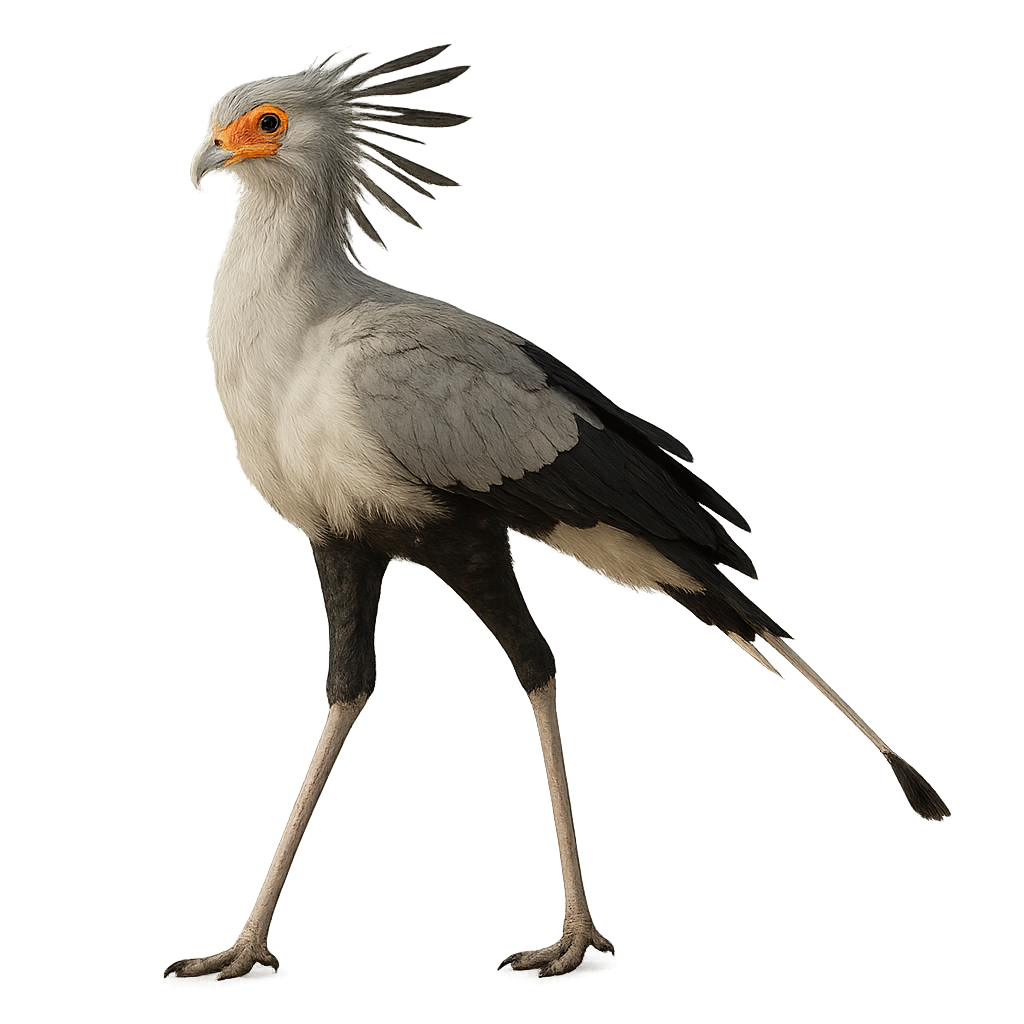Your wildlife photography guide.
Explore the white-cheeked hornbill in detail, study its behavior, prepare your shots.
Where to observe and photograph the white-cheeked hornbill in the wild
Learn where and when to spot the white-cheeked hornbill in the wild, how to identify the species based on distinctive features, and what natural environments it inhabits. The WildlifePhotographer app offers tailored photography tips that reflect the white-cheeked hornbill’s behavior, helping you capture better wildlife images. Explore the full species profile for key information including description, habitat, active periods, and approach techniques.
White-cheeked hornbill
Scientific name: Sagittarius serpentarius

IUCN Status: Least Concern
Family: BUCEROTIDAE
Group: Birds
Sensitivity to human approach: Suspicious
Minimum approach distance: 30 m
Courtship display: March to June
Incubation: 42-46 jours
Hatchings: April to August
Habitat:
Open forests, savannas, and woodlands of sub-Saharan Africa, especially in the northern and central parts of the continent
Activity period :
Primarily active during the day, with peak activity in the morning and late afternoon.
Identification and description:
The Sagittarius Hornbill, or Tockus alboterminatus, is a medium-sized bird primarily found in the savannas and open forests of Central and East Africa, notably in Kenya, Tanzania, and Uganda. It measures about 45 to 50 cm in length and weighs between 100 and 150 g. This bird is distinguished by its predominantly light gray and white plumage, with touches of black on the wings and tail, as well as a long, curved beak, characteristic of hornbills and messengers. Its name "sagittarius" comes from its beak, which resembles an arrow. The Sagittarius Hornbill primarily feeds on fruits, seeds, small insects, and small vertebrates. It is also known for its social behaviors and can be observed in small groups or pairs, and while less noisy than other hornbills, it emits distinct communication calls. The species is not currently endangered but may be affected by deforestation and loss of its natural habitat.
Recommended lens:
300 mm – adjust based on distance, desired framing (portrait or habitat), and approach conditions.
Photography tips:
Use a telephoto lens to photograph this hornbill, especially when it perches on trees or moves in flight. The soft light of the morning or evening is ideal for capturing the details of its distinctive beak and plumage. Be discreet and respect their space to avoid disturbing their natural behavior, especially during the breeding season.
The WildlifePhotographer App is coming soon!
Be the first to explore the best nature spots, track rutting seasons, log your observations, and observe more wildlife.
Already 1 430 wildlife lovers subscribed worldwide

